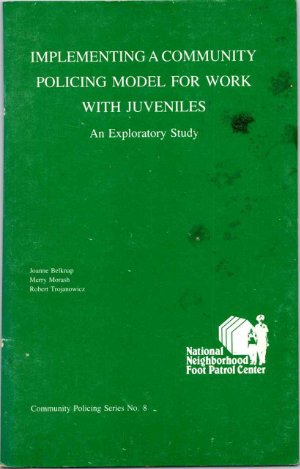JOINT COMMITTEE ON THE LEGAL STATUS OF PRISONERS: Herbert S. Miller, Chairman Richard G. Singer, Reporter Harvey S. Perlman, Reporter
The American Criminal Law Review is a journal of grofessional information andopinion. Il is published quarterly by the American Bar Association Section of CriminalJustice, 1155 E. 60th St.. Chicago, Il 60637. Any member of the American Bar Associa-tion may becone a member of the Section upon payment of the annual dues of $20.00.The dues schedule includes $10.00 for yearly subseription to the American CriminalLaw Rorien. Law Student Division members of the Association may join the Sectionfor $5.00 annual dues.An attorney who is not a member of the Association will be sent its application uponreceipt of the request for Section membership. Individuals and institutions not eligiblefor membership in the American Bar Association may obtain an annual subscription lothe American Criminal Law Review for $20.00 ($25.00 for Alaska, Hawaii, U.S. Posses-sions and foreign countries), Additional copies of issues in volumes 12 and 13 may bepurchased, to the exrent available, for $5 per copy from the Circulation Department,American Bar Association. Issues in previous volumes are sold by Fred B. Rothman &Company, 57 Leuning St., South Hackensack, New Jersey 07606.Remittance of annual dues of applicants for Section membership and payment forannual subscriptions to the American Criminal Lar Review should be sent to Divisionof Professional Services, American Bar Association, 1155 East 60th St., Chicago, IL. 60637, andmade payable to the American Bar Association. Notices on changes of address and inquiries con-cerning missing issues should also be sent to the Division of Professional Services,Manuscripts submitled for publication in the American Criminal Law Revien shouldbe sent to the editorial office of the publication, Georgetown University Law Center,600 New Jersey Avenue, N.W.. Washington, DC 20001. All manuscripts should be typedand triple-spaced with one-inch margins on all sides. Footnotes should conform to AUniform System of Citation published by the Harvard Law Review Association (theWhite Book), and appear separately in the back of the article. One original and iwo-three copies of the article should be submitted. The Review is not obligaled to acknowl-edge receipt of or to return manuscripts. Any contributor who is not notified by theReview within 60 days after submitting an article may assume that the Review is Unablelo publish the material.THE AMERICAN CRIMINAL LAW REVIEW. VOLUME 14, Introduction. WINTER 1977. NUMBER 3.
United States, THE AMERICAN CRIMINAL LAW REVIEW. 1962, 262pg





















